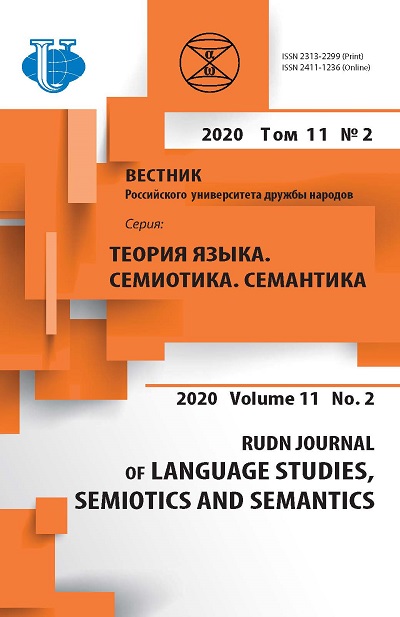The Narrative as a Mnemonic Text (Based on “Children of War” Narratives)
- Authors: Kolysheva O.N.1
-
Affiliations:
- Peoples’ Friendship University of Russia (RUDN University)
- Issue: Vol 11, No 2 (2020): Semantics of Universal and Specific in the Language and a Text
- Pages: 398-411
- Section: SEMIOTICS OF TEXT AND DISCOURSE
- URL: https://journals.rudn.ru/semiotics-semantics/article/view/23590
- DOI: https://doi.org/10.22363/2313-2299-2020-11-2-398-411
- ID: 23590
Cite item
Full Text
Abstract
The article is focuses on the consideration of "children of war" narratives as mnemonic texts united by a common theme and containing memories of the Great Patriotic War in Russia (1941- 1945). The interdisciplinary approach to the analysis of such texts makes it possible to describe the nature of representation of the war in the minds of its eyewitnesses, to trace its rethinking and changing nature of memories. The research material illustrates the distinctive features of the narrative as a mnemonic text, namely the retrospective nature of the narrative, structural and semantic heterogeneity of the texts, linguistic expression of the authenticity of the event series, the interaction of the narrator with the interviewer in the narration, temporal postponement of memories expressed in evaluative judgments, self-examination of the events, reflexion, as well as cognitive "symbiosis" of the past and present, expressed in the using of past and present tenses of verbs in a sentence. The article introduces the notion of mnemonic situation and describes its structure and types: situations of information presence, situations of information loss, situations of information absence and situations of information recovery. In the course of the research, we found examples of interaction of several types of mnemical situation in a sentence or a thematic fragment.
About the authors
Olga N. Kolysheva
Peoples’ Friendship University of Russia (RUDN University)
Author for correspondence.
Email: kolysheva-on@rudn.ru
Assistant of the General and Russian Linguistics Department, Philological Faculty
6, Miklukho-Maklaya street, Moscow, 117198, Russian FederationReferences
- Kubrjakova, E.S., Dem’jankov, V.Z., Pankrac, Ju.G. & Luzina, L.G. (1997). A short dictionary of cognitive terms. Moscow. (In Russ.).
- Krasnyh, V.V. (2001). Basics of Psycholinguistics and Communication Theory. Course of lectures. Moscow: Gnozis. (In Russ.).
- Shheglova, T.K. (2011). Oral history: a textbook for students of higher education in the 540400.68 (050400) field of study Social and economic education. Barnaul: AltGPA. (In Russ.).
- Bruner, J. (1987). Life as Narrative. Social Research, 54 (1), 11—32.
- Labov, W. (1997). Some Further Steps in Narrative Analysis. Special issue of The Journal of Narrative and Life History.
- Njubina, L.M. (2000). Memory and text: a monograph. Smolensk. (In Russ.).
- Frisch, M. (2003). Commentary: Sharing Authority: Oral History and the Collaborative Process. The Oral History Review, 30(1), 111—113.
- Shmid, B. (2003). Narrathology. Moscow: Slavic languages. (In Russ.).
- Kuzmina, S.G. (2016). Cognitive-speech features of the mnemonic text author. IKBFU’s Vestnik. Ser. Philology, Pedagogy, and Psychology, 1, 12—19. (In Russ.).
- Rogachyova, Ju.N. (2003). Representation of the frame “memory” in modern English (On the material of verb vocabulary) [dissertation]. Belgorod. (In Russ.).
- Ishakova, R.F. (2017). Some features of representation of memory processes in public speeches. Philological sciences. Theoretical and practical issues. Tambov: Gramota, 11(77— 1), 105—108. (In Russ.).
- Tivjaeva, I.V. (2017). Cognitive-communicative approach to the study of linguistic representation of memory processes. Journal of Psycholinguistics, 31, 124—139. (In Russ.).
- Ishakova, R.F. & Homjakova, E.G. (2009). Memory and Perception: Some Aspects of Language Representation. Vestnik of Saint Petersburg University. Language and Literature,1(1), 84—89. (In Russ.).
Supplementary files












